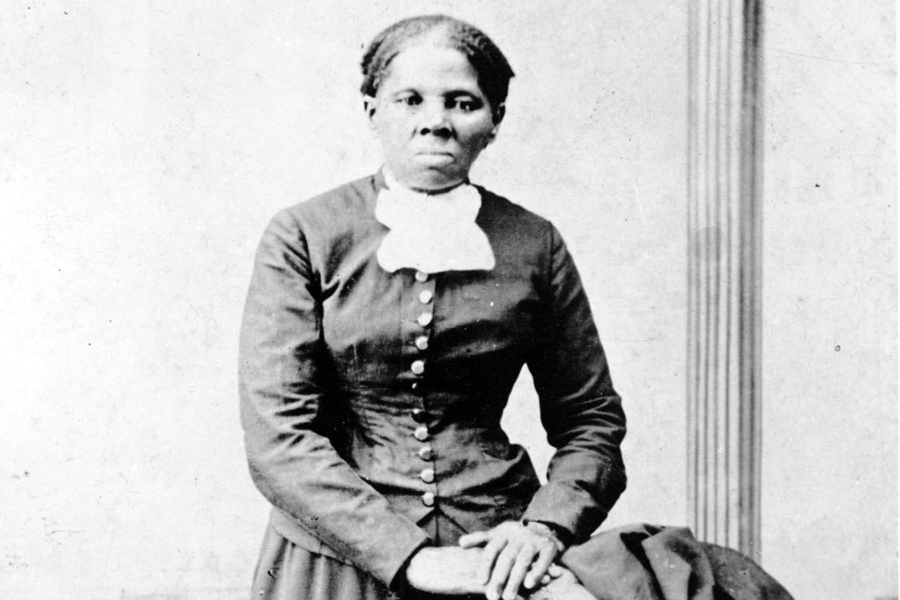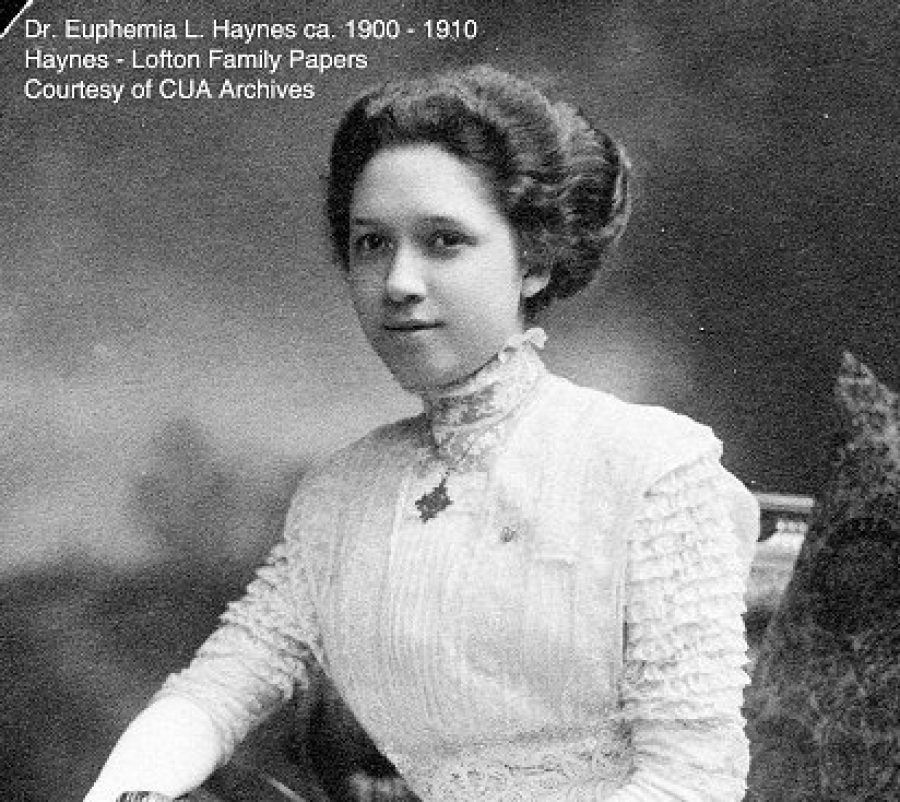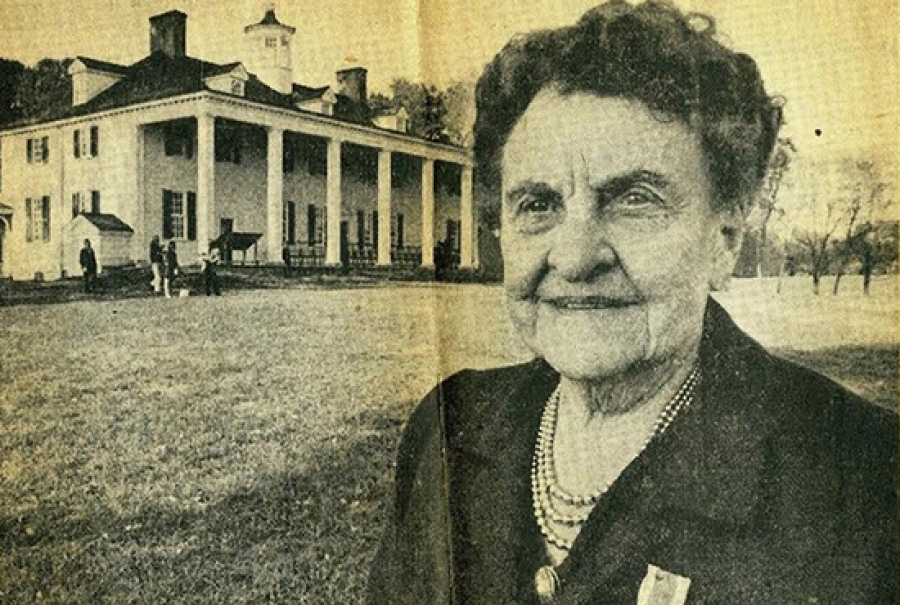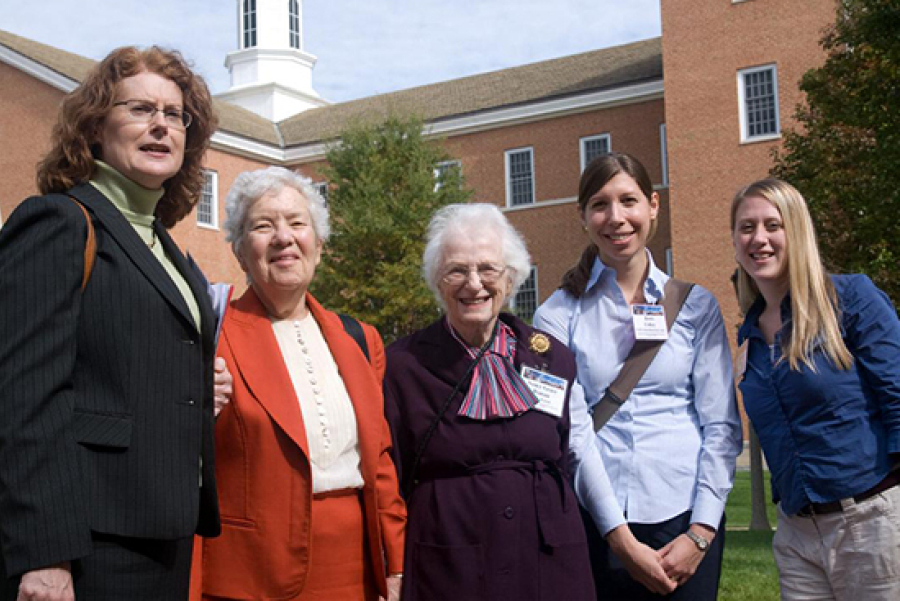Five remarkable women with ties to the Chesapeake region
Learn about the inspirational work of five women from the Chesapeake

From authors to world leaders, inventors to entrepreneurs, the Chesapeake region has been home to some pretty remarkable people. Men such as George Washington, Thurgood Marshall and Edgar Allan Poe are well known for being from the region—but we wanted to celebrate a few of the historic women who have lived and worked in the Chesapeake Bay watershed.
1. Harriet Tubman: Relentless Abolitionist
Harriet Tubman, the most famous “conductor” of the Underground Railroad, was born in 1822 in Dorchester County, Maryland. Born into slavery, she escaped to Philadelphia in 1849.
Tubman eventually set up a home in Auburn, New York, but returned to Maryland not once but 13 times to free family, friends and other slaves, earning her the moniker “Moses.”
During the Civil War, Tubman served as cook, scout, spy and nurse to black Union soldiers. In June of 1863, she guided Colonel James Montgomery and his Second South Carolina regiment, becoming the first woman to command an armed military raid. They destroyed several important Confederate sites and freed over seven hundred slaves.
After the war, Tubman returned to Auburn and continued her career as an activist, humanitarian and suffragist. In 1903, she opened the Harriet Tubman Home for the Aged, where she later died in 1913.
2. Euphemia Lofton Haynes: Trailblazing Mathematician

Euphemia Lofton Haynes was a lifelong educator and the first black woman to receive a Ph.D. in mathematics. Born into a prominent family in Washington, D.C., Haynes received her bachelor’s degree from Smith College in 1914. She then began what would turn into a 47-year teaching career, which included elementary, high school and college classes.
In 1930, after receiving her master’s from the University of Chicago, Haynes began teaching at Miner Teachers College (later the University of the District of Columbia), a school dedicated to training African American teachers. She founded the college’s mathematics department and remained its head until she retired.
In 1943, she earned her Ph.D. in mathematics from the Catholic University of America, becoming the first black woman to do so. Haynes was appointed to the D.C. Board of Education in 1960 and spent her eight years there fighting racial segregation.
3. Rachel Carson: Inspiring Author and Environmentalist

Rachel Carson is famous for Silent Spring, her groundbreaking book outlining the dangers of pesticides. After receiving her bachelor’s in biology from the Pennsylvania College for Women (now Chatham College) and her master’s in zoology from Johns Hopkins University, Carson went on to work first as a professor at the University of Maryland and then as an aquatic biologist at the Bureau of Fisheries (now the U.S. Fish and Wildlife Service).
Writing was always an important part of Carson’s work, and she found early success when she began publishing her own work. Her first three books, released between 1941 and 1955, were all well-received. The third, The Edge of the Sea, became a best seller, won many awards and allowed Carson to retire from the Bureau of Fisheries to concentrate on researching pesticides.
The resulting 1962 book was the wildly successful—and controversial—Silent Spring. In it, Carson describes the effects of large-scale pesticide use, particularly DDT (the first modern synthetic insecticide). While Carson never called for an outright ban of pesticides, the book caused a firestorm, nonetheless.
President John F. Kennedy established a committee to investigate pesticides, and Carson was asked to testify before a Congressional committee in 1963. She died a year later but is remembered by many as someone who ignited the environmental movement.
4. Frances Payne Bolton: Dedicated Preservationist

Frances Payne Bolton had a lasting impact on the Chesapeake Bay as the founder of the Accokeek Foundation. Born into a wealthy Ohio family, she attended schools in Cleveland, Ohio, New York and France. It was after her husband Charles’ death in 1940 that Bolton’s political career began, when she was appointed to serve out his term as a member of the U.S. House of Representatives.
Bolton was heavily involved in issues of healthcare and foreign policy, becoming the first woman delegate to the United Nations. She continued to serve in the House until she was defeated for reelection in 1968.
Outside of politics, Bolton was involved in philanthropic work and was particularly fond of Mount Vernon. It was her love of the estate that led her to buy a 500-acre farm in 1955 just across the Potomac River, in order to prevent development that would spoil the view from Mount Vernon. Bolton then founded a land trust, the Accokeek Foundation, in order to preserve and protect the land forever. She served as the foundation’s president until her death in 1977.
5. Vera Rubin: Resilient Astronomer

Vera Rubin is a trailblazing astronomer who first proved the existence of dark matter. Although born in Philadelphia, her family moved to Washington, D.C. when she was young, and it was there that her fascination with stars flourished. She attended amateur astronomy meetings and, with her father’s help, built a telescope when she was only 14.
In 1948, Rubin graduated from Vassar College as the only astronomy major. Rejected by Princeton because of her gender, she received her master’s degree from Cornell, then returned to D.C. to complete her Ph.D. at Georgetown.
From there, Rubin taught at Montgomery County Junior College in Maryland, then worked at Georgetown as a research assistant and later as assistant professor. In 1965, Rubin joined the staff of the Carnegie Institution in Washington, D.C., where she remains today.
In the 1970s, Rubin began researching galactic movement and found that stars on the edges of galaxies moved just as quickly as those in the center. This was unexpected, because from what she could see, there was not enough gravitational pull to keep fast-moving outer stars in orbit. Rubin’s calculations showed that galaxies must contain invisible dark matter that keeps those outer stars in orbit.
In recognition of her accomplishments, Rubin was elected to the National Academy of Sciences and in 1993 received the National Medal of Science, the highest American award in science. Being all-too familiar with the challenges women face in the sciences, Rubin makes it a point to be a mentor to other women, saying once that “it is well known that I am available 24 hours a day to women astronomers.”
What other remarkable women have ties to the Chesapeake? Let us know in the comments.

Comments
I think Alice Ferguson might also be added. Her legacy in the Hard Bargain farm and Foundation continue to be inspirational.
Great piece! A "Women of the Chesapeake" series would be nice...
What about Sen. Barbara Mikulski who spent her career fighting for the Chesapeake Bay? Please add a 6th woman to this article.
We'd like to nominate the late Evelyn T. Butts, a major voting rights champion here in Norfolk, Virginia, to represent the southern end of the Chesapeake Bay. She was a seamstress caring for her disabled World War II husband but got tired of the unjust poll tax. She and attorney Joseph A. Jordan Jr. filed a lawsuit in 1964, which led to the U.S. Supreme Court striking down state and local poll taxes in a March 24, 1966, landmark decision -- 50 years ago this week. Here is something I posted on Facebook yesterday, along with a couple of links: Today, March 24, is the 50th anniversary of a landmark day in U.S. history, especially for Virginia and the citizens of Norfolk -- and for voters everywhere. On March 24, 1966, the U.S. Supreme Court struck down poll taxes for state and local elections, thanks to a lawsuit filed by Evelyn T. Butts, a Norfolk seamstress and voting rights champion, and her very determined attorney, Joseph A. Jordan Jr. (The 24th amendment, ratified in 1964, had outlawed poll taxes only in federal elections.) The Evelyn Butts lawsuit was consolidated with a suit from Annie Harper of northern Virginia and became known as Harper v. Virginia Board of Elections. Evelyn Butts died in 1993. The Virginia Senate later passed a resolution citing the "extraordinary courage" of this "trailblazing leader." It added that her "most lasting legacy lives on in the entire generation of political leaders, both black and white, who owe their success to the tireless and inspired efforts of a Norfolk seamstress." A street in Norfolk is named for Evelyn T. Butts and is adjacent to the Oakwood Chapel Church, which has a small display to commemorate the voting rights accomplishment of Evelyn T. Butts. http://www.encyclopediavirginia.org/poll_tax and http://ideastations.org/radio/news/patriotism-perseverance-and-end-poll-tax
Sophie Kerr (1880-1965) was a writer who wrote about small town girls making it big! She grew up in Denton, Maryland, attended Hood College and then University of Vermont. She bequeathed the bulk of her estate to Washington College in Chestertown Maryland to establish a prize for a senior who shows promise in the field of literary endeavors. The 2016 prize will be $65,770!
https://en.wikipedia.org/wiki/Sophie_Kerr
https://www.washcoll.edu/departments/english/sophie-kerr-legacy/
Thank you!
Your comment has been received. Before it can be published, the comment will be reviewed by our team to ensure it adheres with our rules of engagement.
Back to recent stories